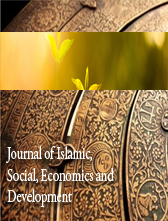INTEGRATED RURAL DEVELOPMENT: A CATALYST TO RURAL ECONOMY IN SIK, KEDAH, MALAYSIA
Abstract
This study examines the potential effects of an integrated economy on 34 traditional villages that went through “Integrated Rural Development" (IRD) in the District of Sik, Kedah, Malaysia. To enhance the rural economy and the villagers' quality of life, the IRD has fostered a continuous intervention and partnership process with external parties, including government organizations. These villages evaluated agriculture, livestock, small-and-medium entrepreneurs (SME) industries, and rural tourism as integrated economic sectors. The methods involved in this study are SWOT Analysis and GAP Analysis. Besides, to determine the best practice framework, this study uses Creativity Index Analysis (C.I) to assess how different economies have affected the idea of IRD. A rural area with a 1.0 creativity index value has the potential for economic integration. The majority of the 191 respondents from this area, 98.2% of respondents agreed that the IRD project can have a positive impact on their village from various aspects. The development framework suggests that within five years of implementation to guarantee the impact of the IRD project.













